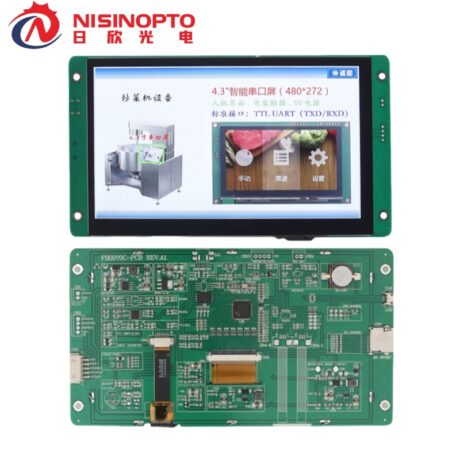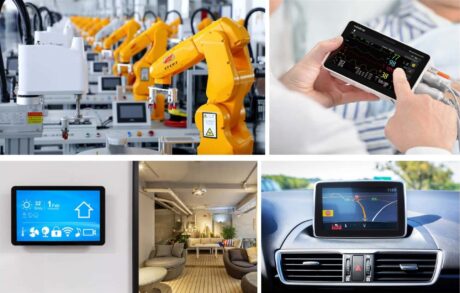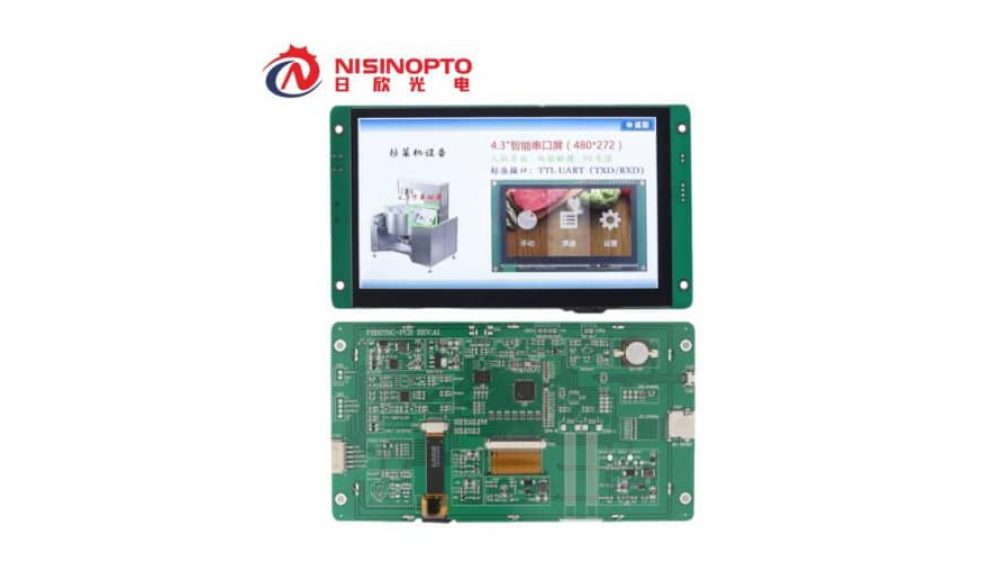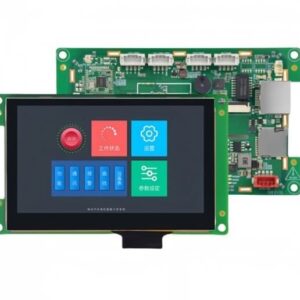In modern embedded system design, serial port displays (SPDs) have become core components of human-machine interface (HMI) due to their compact structure, flexible communication, and rich display functions. They are widely used in industrial automation, tıbbi ekipman, akıllı evler, ve diğer alanlar.

I. Features of SPDs
Various sizes: Available in sizes from 2 ile 7 inç, they adapt to various scenarios.
Serial communication: Supports protocols such as RS232, RS485, and TTL, enabling efficient integration with MCUs.
Graphical display: Supports images, text, curves, controls, and other elements, providing an intuitive and rich interface.
Touch interaction: Integrated touch functionality enhances the user experience.
Low-power design: Suitable for long-term embedded devices.
II. Technical Principles
A SPD consists of a display controller and a serial communication module. The controller, based on a low-power processor such as the ARM Cortex-M, is responsible for graphics rendering and display control; the communication module uses the UART protocol for data transmission. Predefined instruction sets implement functions such as screen refresh and touch event reporting. The accompanying HMI design software supports graphical user interface development, significantly reducing development complexity.
III. Application Scenarios
Endüstriyel Otomasyon: Serves as a PLC operation panel to display status, alarms, and parameter settings.
Tıbbi Ekipman: Used in portable devices to display monitoring data and treatment parameters.
Akıllı Ev: Integrated into smart terminals to provide an intuitive control interface.
Instrumentation: Displays real-time data and supports analysis and alarm functions.

IV. Development Trends
Improves resolution and color performance to optimize the visual experience.
Integrates with the Internet of Things to support remote monitoring and data interconnection.
Combines touch and voice interaction to enrich interaction methods.
Introduces modular and customized solutions to meet specific industry needs.
With its significant advantages, serial port displays continue to empower embedded visual interaction. With the evolution of technology and the deepening of applications, they hold broad development prospects.




